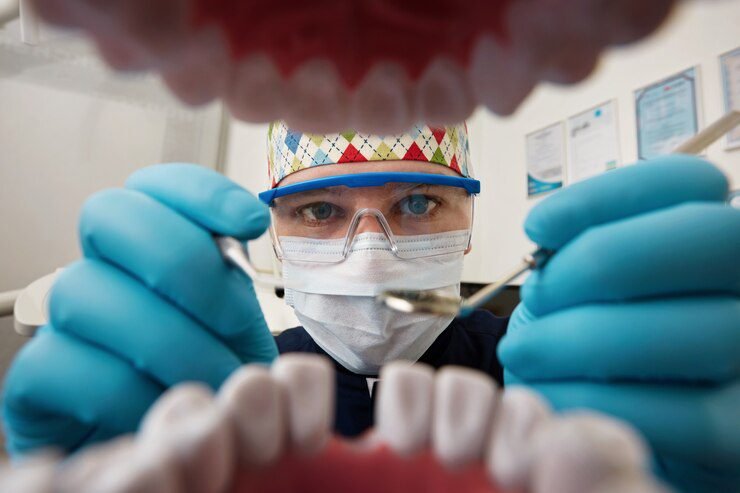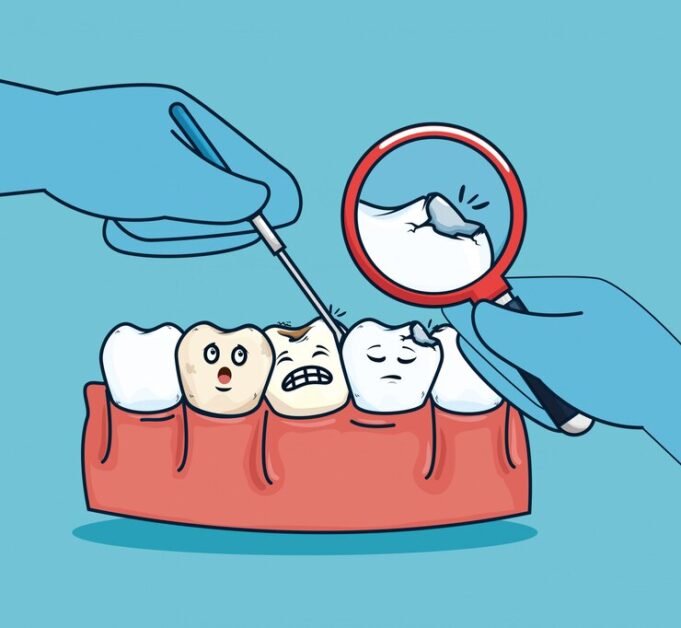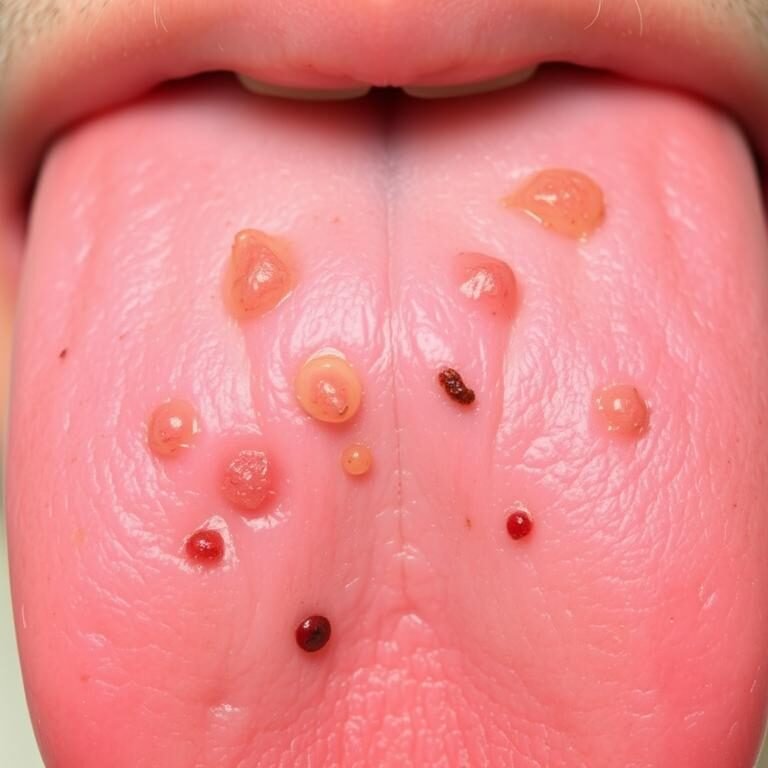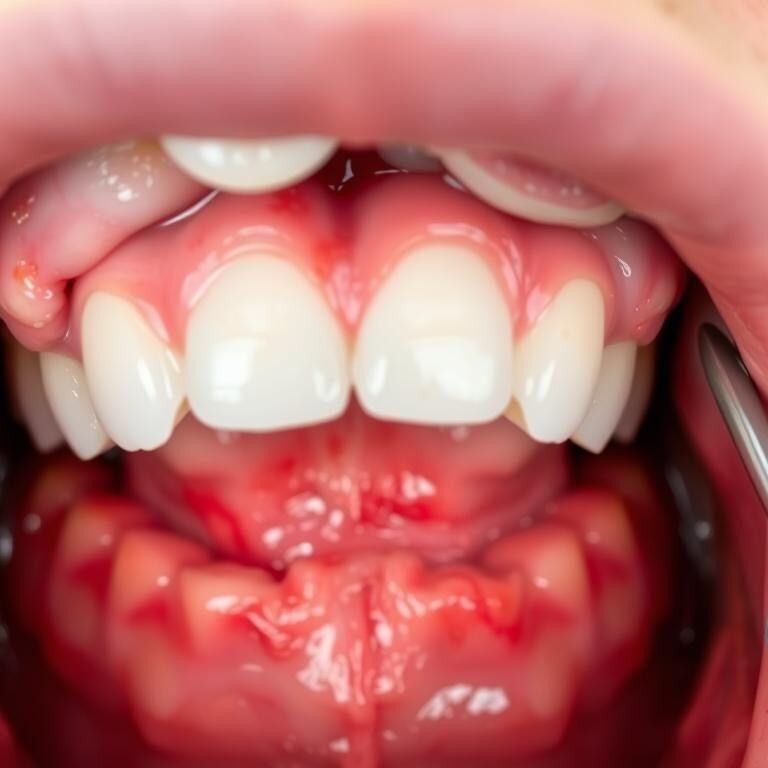Table of Contents
1: Understanding Dental Cavities and Their Impact on Oral Health

Dental cavities, also known as dental caries or tooth decay, are one of the most prevalent oral health issues around the world. These cavities occur when harmful bacteria in the mouth produce acids that attack the tooth enamel, leading to their gradual disintegration. If left untreated, cavities can progress deeper into the tooth, resulting in pain, infection, and even tooth loss.
The impact of dental cavities on oral health is significant. Not only do they cause discomfort and affect the ability to eat and speak properly, but they can also have long-term consequences. Cavities can lead to the need for extensive dental treatment, such as fillings, root canals, or even tooth extractions. Moreover, tooth decay can impact overall health, as it has been linked to systemic conditions like heart disease and diabetes. Therefore, understanding dental cavities and their implications is crucial in maintaining optimal oral health throughout one’s life.
2: The Role of Oral Hygiene in Preventing Cavities

Maintaining good oral hygiene is crucial in preventing dental cavities. Proper oral hygiene practices, such as regular brushing and flossing, help to remove plaque and bacteria from the teeth and gums. Brushing at least twice a day, using a fluoride toothpaste, and flossing daily are the cornerstone of effective oral hygiene.
In addition to brushing and flossing, using mouthwash can further enhance oral hygiene. Mouthwash helps to kill bacteria in the mouth and freshen breath. Opt for a mouthwash that contains fluoride to provide an extra layer of protection against cavities. It is important to note that mouthwash should not be used as a substitute for brushing and flossing, but rather as an adjunct to a comprehensive oral hygiene routine.
By diligently practicing good oral hygiene habits, individuals can greatly reduce their risk of developing cavities. Consistency is key, as plaque and bacteria can quickly accumulate if oral hygiene is neglected. Incorporating these habits into a daily routine can go a long way in promoting optimal oral health and preventing the onset of cavities.
3: Exploring the Connection Between Diet and Dental Health

A healthy diet plays a crucial role in maintaining optimal dental health. The foods and beverages we consume can either promote or hinder the health of our teeth and gums. One of the primary culprits when it comes to dental problems is sugar. Overconsumption of sugary foods and drinks can lead to tooth decay and cavities. When we consume sugar, bacteria in our mouths feed on it, producing acids that attack the enamel of our teeth. This erosion weakens the enamel and, over time, can lead to the formation of cavities. It is important to be mindful of our sugar intake and choose healthier alternatives, such as fruits, vegetables, and whole grains.
In addition to sugar, acidic foods and drinks can also have damaging effects on dental health. Acidic substances, such as citrus fruits, sodas, and certain sports drinks, can erode the enamel, making teeth more susceptible to cavities. It is advisable to consume acidic foods and beverages in moderation and rinse the mouth with water afterwards to minimize the effects of acidity. On the other hand, there are some foods that can actually promote dental health. Foods rich in calcium, such as dairy products and leafy greens, help strengthen tooth enamel. Crunchy fruits and vegetables, like apples and carrots, can stimulate saliva production, which helps wash away harmful bacteria and food particles. Choosing a balanced diet that includes these beneficial foods can contribute to better oral health overall.
4: Factors That Contribute to Increased Cavity Risk
Factors That Contribute to Increased Cavity Risk
When it comes to understanding the causes of dental cavities, there are several key factors that contribute to an increased risk. Poor oral hygiene practices, such as inadequate brushing and flossing, can leave behind food particles and bacteria on the teeth, leading to the formation of plaque. Over time, this plaque can harden into tartar, which provides a breeding ground for harmful bacteria that can erode tooth enamel and cause cavities.
Another significant factor that contributes to increased cavity risk is an unhealthy diet. Consuming excessive amounts of sugary foods and beverages, especially those high in refined sugars and acids, can be detrimental to oral health. These substances promote the growth of bacteria in the mouth, producing acid that attacks the tooth enamel and increases the likelihood of cavities forming.
Additionally, certain lifestyle choices and habits can also play a role in cavity development. Frequent snacking, particularly on sugary or acidic snacks, prolongs the exposure of teeth to harmful substances and increases the risk of cavities. Additionally, habits such as smoking or using tobacco products can weaken tooth enamel, making teeth more susceptible to decay.
It is important to keep these factors in mind and take appropriate measures to reduce cavity risk. By practicing good oral hygiene, maintaining a healthy diet, and making mindful lifestyle choices, individuals can greatly decrease their chances of experiencing dental cavities.
Here’s a table summarizing factors that contribute to increased cavity risk:
| Factors Contributing to Increased Cavity Risk | Description | Credible Source |
|---|---|---|
| Poor Oral Hygiene | Inadequate brushing and flossing allow plaque to accumulate on teeth, leading to acid production by bacteria, which erodes tooth enamel and causes cavities. Poor oral hygiene habits increase the risk of plaque buildup and subsequent tooth decay. | American Dental Association (ADA): Link |
| High Sugar Diet | Consumption of sugary foods and beverages promotes the growth of cavity-causing bacteria in the mouth. Bacteria metabolize sugars and produce acids that attack tooth enamel, leading to demineralization and cavity formation. Diets high in sugar increase the likelihood of developing cavities. | Centers for Disease Control and Prevention (CDC): Link |
| Infrequent Dental Check-ups | Regular dental check-ups enable early detection and treatment of dental issues, including cavities. Infrequent dental visits may result in undiagnosed cavities progressing to more advanced stages, requiring more extensive treatment interventions. | Mayo Clinic: Link |
| Dry Mouth | Reduced saliva flow, often caused by medications, medical conditions, or lifestyle factors, contributes to dry mouth. Saliva helps neutralize acids in the mouth, remineralize tooth enamel, and wash away food particles and bacteria. Dry mouth increases cavity risk by promoting bacterial growth and enamel demineralization. | National Institute of Dental and Craniofacial Research (NIDCR): Link |
| Acidic Foods and Drinks | Acidic foods and beverages, such as citrus fruits, sodas, and sports drinks, erode tooth enamel and increase cavity risk. Frequent consumption of acidic foods and drinks weakens enamel, making teeth more susceptible to decay and cavities over time. | American Academy of Pediatrics (AAP): Link |
| Inadequate Fluoride Exposure | Fluoride helps strengthen tooth enamel and protect against cavities. Inadequate fluoride exposure, either from water, toothpaste, or dental treatments, reduces enamel resistance to acid attacks and increases cavity susceptibility. Optimal fluoride levels support enamel remineralization and cavity prevention. | American Dental Association (ADA): Link |
5: How Genetics Influence Cavity Susceptibility
Genetics play a significant role in determining an individual’s susceptibility to cavities. Research has shown that certain genetic variations can increase the risk of developing dental caries. Studies have identified specific genes that are involved in tooth enamel formation and remineralization, as well as genes related to the production and regulation of saliva.
One such gene is the amelogenin gene, which is responsible for the production of enamel proteins. Variations in this gene can lead to weaker enamel, making teeth more susceptible to cavities. Additionally, genes involved in the development of saliva, such as the aquaporin gene, can impact the amount and composition of saliva produced. Saliva plays a crucial role in maintaining oral health by neutralizing acids, washing away food particles, and providing minerals necessary for remineralization of tooth enamel.
While genetics can influence cavity susceptibility, it is important to note that they do not guarantee the development of cavities. Environmental factors, such as diet and oral hygiene practices, also play a significant role in the onset and progression of dental caries. Understanding the interplay between genetics and environmental factors can help individuals and healthcare professionals develop personalized strategies to prevent cavities and maintain optimal oral health. Further research in this area is crucial for uncovering the complex mechanisms behind genetic influence on cavity susceptibility and developing targeted interventions to address this issue.
6: The Impact of Saliva on Cavity Formation
Saliva plays a crucial role in maintaining oral health, including protecting against cavity formation. It contains important substances that help fight harmful bacteria and neutralize acid, both of which can contribute to tooth decay. One of the key components of saliva is bicarbonate ions, which help to buffer and neutralize the acids produced by bacteria in the mouth. This buffering action helps to maintain a more balanced pH level in the mouth, preventing acid erosion of tooth enamel.
Additionally, saliva contains enzymes such as amylase, which helps to break down food particles and starches. This aids in the digestion process and reduces the chance of food particles remaining trapped in the mouth, providing a food source for bacteria and contributing to cavity formation. Saliva also helps to wash away food debris and plaque from the teeth, further reducing the risk of cavities.
However, it is important to note that the quantity and quality of saliva can vary among individuals. Some people naturally produce more saliva, while others may have conditions that decrease saliva production, such as certain medications or medical conditions. In these cases, individuals may be at a higher risk for cavities and should take extra care in maintaining good oral hygiene practices. Additionally, certain lifestyle factors, such as smoking or excessive alcohol consumption, can also negatively impact saliva production and increase the risk of tooth decay. Understanding the impact of saliva and its role in cavity formation can help individuals make informed choices to protect their oral health.
7: Dental Habits That Increase the Risk of Cavities
Dental habits play a crucial role in the overall health of our teeth and gums. Unfortunately, there are certain habits that can increase the risk of developing cavities. One such habit is neglecting regular brushing and flossing. Proper oral hygiene is essential for removing plaque and food particles from our teeth, preventing the formation of cavities. When we fail to brush and floss regularly, plaque can build up, leading to the erosion of tooth enamel and the development of cavities.
Another common habit that increases the risk of cavities is snacking frequently, especially on sugary or acidic foods and beverages. Consuming sugary snacks and drinks throughout the day exposes our teeth to a continuous attack by acid-producing bacteria. These bacteria feed on the sugars in our food and produce acids that can erode the protective enamel layer of our teeth. Limiting sugary and acidic snacks, and instead opting for healthier options, can help reduce the risk of developing cavities.
In summary, neglecting regular brushing and flossing, as well as indulging in frequent snacking on sugary or acidic foods, are dental habits that increase the risk of cavities. By being mindful of these habits and adopting healthier practices, we can maintain optimal oral health and reduce the likelihood of developing tooth decay.
8: The Effects of Medications on Oral Health
Medications play a crucial role in managing various health conditions. However, it’s important to be aware of their potential effects on oral health. Some medications can have direct impacts on the mouth and teeth, causing side effects that can lead to oral health issues. For instance, certain antibiotics, such as tetracycline, can discolor and weaken tooth enamel, leading to increased susceptibility to cavities. Additionally, medications that cause dry mouth, known as xerostomia, can also contribute to dental problems. Saliva plays a vital role in neutralizing acids in the mouth and washing away harmful bacteria. Without sufficient saliva production, the risk of cavities and gum disease can significantly increase.
It’s crucial to communicate with your healthcare provider about any medications you are taking and their potential impact on your oral health. Dentists can work closely with physicians to develop strategies to minimize the effects of these medications. They may recommend increased dental hygiene practices, such as regular brushing and flossing, or suggest the use of saliva substitutes or special mouthwashes to combat dry mouth. Additionally, dentists may conduct more frequent dental check-ups and cleanings to closely monitor and maintain oral health while on medication. By being proactive and discussing your medications with your healthcare providers, you can effectively manage any potential oral health concerns and maintain a healthy smile.
9: Dental Conditions and Their Relationship to Cavity Risk
Dental conditions can have a significant impact on an individual’s risk for developing cavities. One such condition is dry mouth, also known as xerostomia. Saliva plays a crucial role in maintaining oral health by neutralizing acids, washing away food particles, and remineralizing tooth enamel. When the mouth is inadequately moist, as is the case with dry mouth, these protective mechanisms become compromised, increasing the risk of cavity formation.
Another dental condition that can contribute to cavity risk is tooth erosion. Tooth erosion occurs when the protective layer of enamel on the teeth is worn away by acids, typically from acidic foods and drinks or from gastric acid in cases of frequent vomiting or acid reflux. Without this outer layer of protection, the teeth become vulnerable to cavities. It is important for individuals with tooth erosion to take extra precautions, such as using fluoride toothpaste and regularly visiting the dentist, to minimize the risk of developing cavities.
In addition to dry mouth and tooth erosion, other dental conditions such as gum disease and tooth decay can also increase an individual’s susceptibility to cavities. Gum disease, or periodontal disease, involves inflammation and infection of the gums and supporting structures of the teeth. This condition can cause the gums to recede, exposing the tooth roots and making them more susceptible to decay. Similarly, tooth decay weakens the structure of the tooth, making it more prone to cavity formation. Individuals with these dental conditions should prioritize regular dental check-ups and adhere to a comprehensive oral hygiene routine to minimize their cavity risk.
Understanding the relationship between dental conditions and cavity risk is essential for maintaining optimal oral health. By addressing and managing these conditions effectively, individuals can significantly reduce their susceptibility to cavities and improve their overall dental well-being. Regular dental visits and open communication with a dentist can provide personalized guidance and treatment options for individuals with dental conditions, helping them to mitigate the risk of cavities and maintain a healthy smile.
10: The Importance of Regular Dental Check-ups
Regular dental check-ups are a crucial aspect of maintaining optimal oral health. These appointments provide an opportunity for dentists to assess the overall condition of your teeth, gums, and mouth, detecting any potential issues at an early stage. During a check-up, your dentist will conduct a thorough examination, looking for signs of cavities, gum disease, oral cancer, and other oral health problems. They will also clean your teeth, removing tartar buildup and polishing them to restore their natural shine.
In addition to the physical examination, regular dental check-ups offer several benefits. Dentists can provide personalized oral hygiene instructions, offering tips and techniques to improve your at-home routine. They can also administer preventive treatments, such as fluoride application or dental sealants, to protect your teeth from decay. Furthermore, check-ups allow dentists to track any changes in your oral health over time, enabling them to intervene early if necessary and prevent more extensive and costly treatments in the future. Overall, regular dental check-ups play a vital role in preserving your oral health and preventing dental issues from escalating into more significant problems.
11: Understanding Dental Sealants and Their Role in Preventing Cavities
Dental sealants play a crucial role in preventing cavities, particularly in children and adolescents. These thin, plastic coatings are applied to the chewing surfaces of the back teeth, where decay commonly occurs. By creating a protective barrier, sealants help to keep out food particles and plaque, which are primary contributors to cavity formation.
Several studies have demonstrated the effectiveness of dental sealants in reducing the risk of cavities. According to a systematic review published in the Journal of Applied Oral Science, sealants can prevent up to 80% of cavities in the first two years after application. Furthermore, the American Dental Association recommends the use of sealants as a safe and effective preventive measure, especially for children at higher risk of developing cavities.
Sealants are typically applied during a routine dental visit and involve a simple and painless process. First, the teeth are thoroughly cleaned and dried. Next, an etching gel is applied to roughen the tooth surface, allowing the sealant to adhere better. The sealant is then applied and hardened using a special curing light. Once in place, sealants can last for several years before replacement may be necessary.
In conclusion, dental sealants are a valuable tool in preventing cavities, particularly in children and adolescents. They provide an additional layer of protection against decay by sealing off the vulnerable chewing surfaces of the teeth. With their proven effectiveness and simple application process, sealants offer a proactive approach to maintaining optimal oral health and reducing the need for invasive dental treatments in the future.
12: The Role of Fluoride in Preventing Cavities
Fluoride has long been recognized for its role in preventing cavities and promoting oral health. This natural mineral strengthens tooth enamel, making it more resistant to acid attacks from bacteria in the mouth. Studies have shown that communities with fluoridated water have significantly lower rates of tooth decay compared to those without. In fact, the Centers for Disease Control and Prevention (CDC) considers community water fluoridation as one of the greatest public health achievements of the 20th century.
Fluoride can be obtained from multiple sources, including drinking water, toothpaste, mouth rinses, and professional fluoride applications. The American Dental Association (ADA) recommends that individuals of all ages use fluoride toothpaste and receive professional fluoride treatments to maintain optimal oral health. For children, fluoride plays an especially crucial role in preventing cavities as their teeth are still developing. Research has shown that regular fluoride exposure during childhood can reduce decay rates by up to 40%. However, it is important to ensure that fluoride consumption is at optimal levels, as too much fluoride can lead to fluorosis, a condition that causes white spots or streaks on the teeth. Your dentist can provide guidance on the appropriate use of fluoride products based on your individual needs.
13: Managing Cavity Risk for Children and Adolescents
Children and adolescents are particularly vulnerable to dental cavities due to a variety of factors. As their permanent teeth are still developing, any damage caused by cavities can have long-lasting consequences. It is crucial to manage cavity risk for this age group to ensure their oral health is maintained.
One effective way to manage cavity risk is by promoting good oral hygiene habits from an early age. Encouraging children to brush their teeth twice a day with fluoride toothpaste and teaching them proper brushing techniques can significantly reduce the risk of cavities. Additionally, regular flossing should be incorporated into their oral care routine, as it helps to remove plaque and food particles between the teeth.
Another important aspect of managing cavity risk for children and adolescents is maintaining a balanced and healthy diet. Limiting the consumption of sugary and acidic foods and drinks is crucial, as they can contribute to cavity formation. Encouraging the intake of nutritious foods, such as fruits, vegetables, and dairy products, can help promote optimal dental health. Moreover, ensuring that children and adolescents drink fluoridated water or use fluoride supplements as recommended by dental professionals can provide additional protection against cavities.
By instilling proper oral hygiene practices and promoting a healthy diet, caregivers and dental professionals can effectively manage cavity risk in children and adolescents. However, it is essential to remember that regular dental check-ups and professional cleanings are also crucial for maintaining optimal oral health. With a comprehensive approach, we can ensure the well-being of young individuals and set them on the path to a lifetime of good oral health.
14: Addressing Cavity Risk in Older Adults
As we age, our oral health needs change, and addressing cavity risk becomes increasingly important for older adults. Maintaining good oral hygiene habits and seeking regular dental care are crucial steps in preventing cavities and other oral health issues in this age group.
One of the main factors that contribute to increased cavity risk in older adults is dry mouth, also known as xerostomia. As we age, our salivary glands produce less saliva, which plays a vital role in protecting our teeth and gums. Saliva helps to wash away food particles and neutralize acids in the mouth, preventing plaque buildup and cavity formation. Additionally, saliva contains minerals that contribute to the remineralization of tooth enamel, strengthening it against decay. Therefore, older adults with dry mouth may be more susceptible to cavities.
Another cavity risk factor for older adults is root surface exposure. As we age, our gums may recede, exposing the root surfaces of our teeth. Unlike the enamel on the crowns of our teeth, the roots have a softer and more vulnerable layer called cementum. This makes the roots more prone to decay. Additionally, root exposure can cause sensitivity to hot and cold temperatures, making it uncomfortable to consume certain foods and beverages. Therefore, older adults should be particularly diligent in their oral hygiene routine and seek regular dental care to address any root surface exposure and prevent cavity formation.
In conclusion, the unique oral health challenges faced by older adults make addressing cavity risk a top priority. Maintaining good oral hygiene habits, seeking regular dental care, and addressing factors such as dry mouth and root surface exposure are essential in preventing cavities in this age group. By understanding and addressing these specific risk factors, older adults can maintain optimal oral health and continue to enjoy a healthy smile.
15: Lifestyle Choices That Contribute to Cavity Formation
Lifestyle choices play a significant role in cavity formation and overall oral health. One of the main contributors to cavities is a diet high in sugar and carbohydrates. Consuming sugary snacks and drinks, especially between meals, creates an environment in the mouth that promotes bacterial growth and acid formation. These acids attack the tooth enamel, leading to the development of cavities. Limiting the intake of sugary foods and beverages can help reduce the risk of cavity formation.
Another lifestyle choice that contributes to cavity formation is poor oral hygiene. Failing to brush and floss regularly allows bacteria and plaque to accumulate on the teeth, increasing the risk of cavities. Additionally, not using proper brushing and flossing techniques may result in inadequate removal of plaque and food particles, further compromising oral health. Adopting a consistent oral hygiene routine that includes brushing at least twice a day, flossing daily, and using mouthwash can help prevent the formation of cavities.
In conclusion, lifestyle choices such as diet and oral hygiene have a significant impact on cavity formation. Avoiding sugary foods and drinks, practicing proper oral hygiene, and visiting the dentist regularly are essential steps in reducing the risk of cavities and maintaining optimal oral health.
16: Tips for Reducing Cavity Risk and Maintaining Oral Health
Maintaining good oral health practices is essential for reducing the risk of cavities and ensuring a healthy smile. Here are some tips to help you maintain optimal oral health:
1. Brush and floss regularly: Brush your teeth at least twice a day using a soft-bristled toothbrush and fluoride toothpaste. Don’t forget to floss daily to remove plaque and debris from between your teeth.
2. Use mouthwash: Incorporate an antimicrobial mouthwash into your oral hygiene routine. This can help kill bacteria and freshen your breath, providing additional protection against cavities.
3. Choose a balanced diet: Opt for a diet rich in fruits, vegetables, whole grains, lean proteins, and low-fat dairy products. Limit sugary and acidic foods and beverages, as they can contribute to tooth decay.
4. Stay hydrated: Drinking plenty of water throughout the day helps promote saliva production, which helps to neutralize acids and wash away food particles that can lead to cavities.
Remember, prevention is key to maintaining good oral health. By following these tips and practicing proper oral hygiene, you can reduce the risk of cavities and keep your teeth and gums healthy.
What are some tips for maintaining oral health and reducing cavity risk?
There are several tips you can follow to maintain oral health and reduce the risk of cavities. These include practicing good oral hygiene, such as brushing your teeth twice a day and flossing daily. It is also important to have a balanced diet, limiting sugary and acidic foods and drinks. Regular dental check-ups and cleanings are crucial as well. Additionally, considering the use of dental sealants and fluoride treatments can further protect your teeth from cavities.
How does genetics influence cavity susceptibility?
Genetics can play a role in determining an individual’s susceptibility to cavities. Some individuals may have inherited weaker tooth enamel or a greater likelihood of developing plaque buildup. However, while genetics can contribute to cavity risk, it is not the sole determining factor. Good oral hygiene practices and regular dental care can still help prevent cavities, regardless of genetic predisposition.
How does saliva impact cavity formation?
Saliva plays a crucial role in oral health and cavity formation. It helps to wash away food particles, neutralize acids in the mouth, and remineralize tooth enamel. Insufficient saliva production, often caused by certain medical conditions or medications, can increase the risk of cavities. Maintaining proper hydration and seeking dental advice if experiencing dry mouth can help mitigate this risk.
Can medications have negative effects on oral health?
Yes, certain medications can have negative effects on oral health. Some medications may reduce saliva flow or cause dry mouth, increasing the risk of cavities. Others may cause gum overgrowth, leading to difficulties in oral hygiene practices. It is crucial to inform your dentist about any medications you are taking so they can provide appropriate recommendations and preventive measures.
How can lifestyle choices contribute to cavity formation?
Lifestyle choices can significantly contribute to cavity formation. Consuming a diet high in sugary and acidic foods and drinks, smoking, and excessive alcohol consumption can all increase cavity risk. Additionally, neglecting proper oral hygiene practices, such as irregular brushing and flossing, can further contribute to the formation of cavities. Making healthier lifestyle choices and maintaining good oral hygiene habits can help reduce this risk.
Are there any specific tips for managing cavity risk in children and adolescents?
Yes, there are specific tips for managing cavity risk in children and adolescents. It is important to establish good oral hygiene habits from an early age, including regular brushing and flossing. Limiting sugary snacks and drinks, encouraging a balanced diet, and considering dental sealants and fluoride treatments can help protect their developing teeth. Regular dental check-ups are also crucial to monitor their oral health and address any potential issues promptly.
How can cavity risk be addressed in older adults?
Cavity risk in older adults can be addressed by maintaining good oral hygiene practices, including regular brushing and flossing. Due to age-related factors such as reduced saliva production and gum recession, older adults may be more prone to cavities. Therefore, it is important to stay hydrated, use fluoride products, and schedule regular dental check-ups to prevent and detect any potential cavities or oral health concerns.
Are there any lifestyle choices that can help reduce cavity risk?
Yes, there are several lifestyle choices that can help reduce cavity risk. These include maintaining a balanced diet with limited sugary and acidic foods and drinks. Additionally, avoiding smoking and excessive alcohol consumption can lower cavity risk. Practicing good oral hygiene habits, such as regular brushing and flossing, and scheduling regular dental check-ups are also essential in reducing cavity risk and maintaining oral health.












